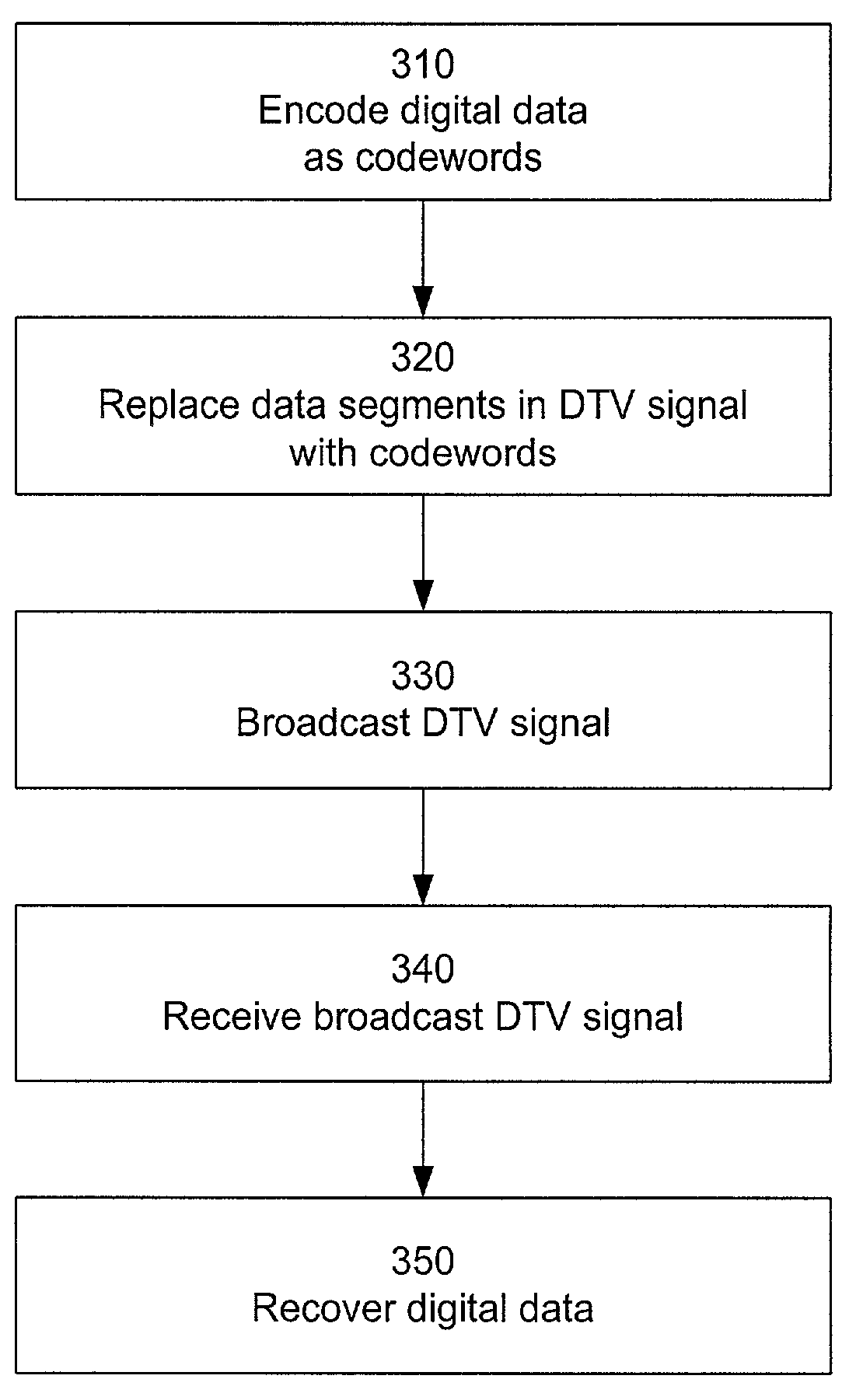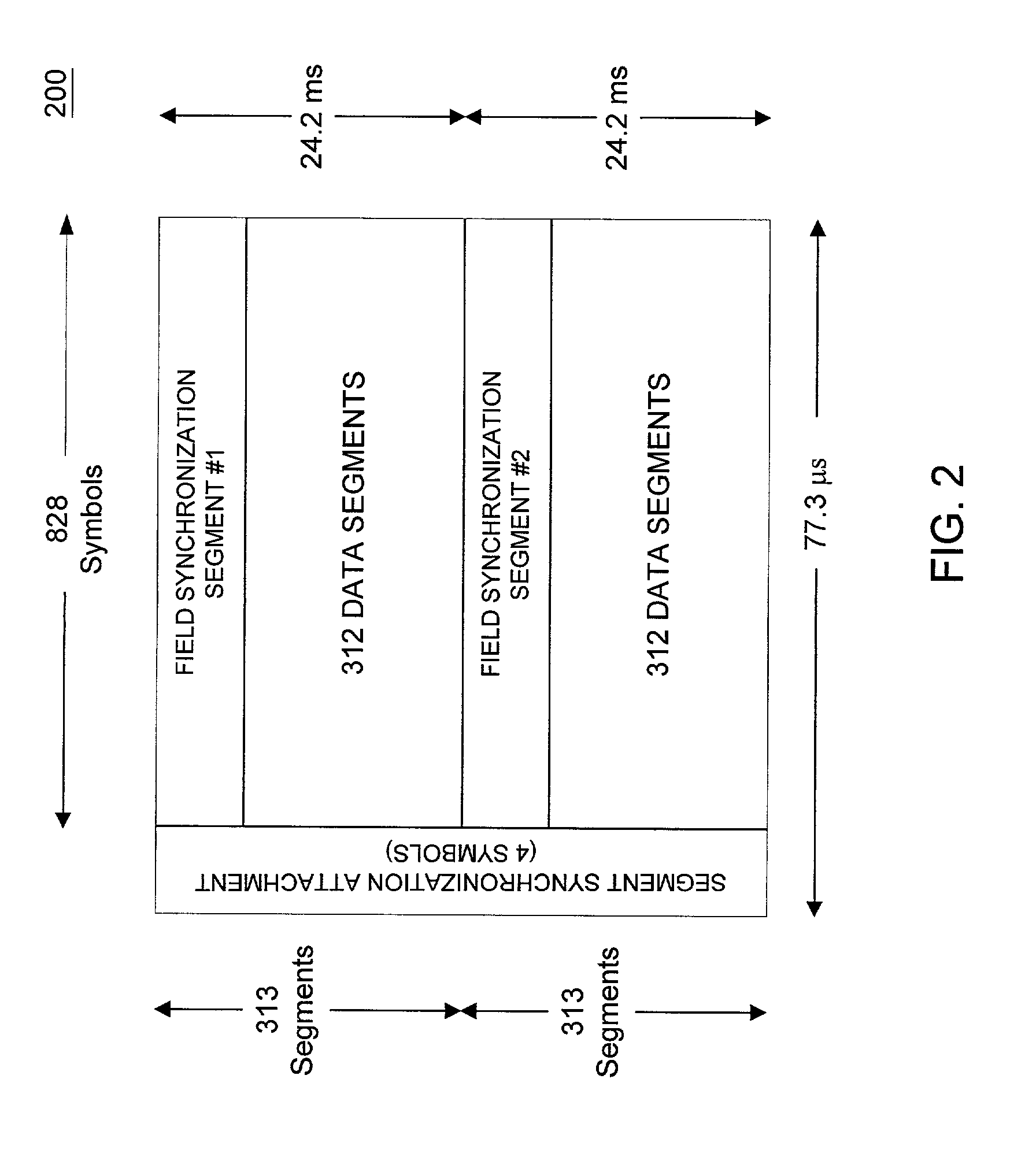Robust data transmission using broadcast digital television signals
a technology of digital television and data transmission, applied in the direction of color television with bandwidth reduction, television system, instruments, etc., can solve the problem that the television infrastructure is not always suited to these types of data, and achieve the effect of reducing the signal-to-noise ratio
- Summary
- Abstract
- Description
- Claims
- Application Information
AI Technical Summary
Benefits of technology
Problems solved by technology
Method used
Image
Examples
Embodiment Construction
[0033]FIG. 1 is a block diagram of an example system 100 according to the present invention. System 100 includes a receiver 102 that receives digital television (DTV) broadcasts from one or more DTV transmitters 106A–N.
[0034]One example of a DTV transmitter 106 is a transmission tower which broadcasts DTV signals over the air to receiver 102. Another example is the transmitter for a cable television system, in which case the DTV signals arrive at the receiver 102 via a cable link. Satellite TV systems, also known as Direct Broadcast Satellites (DBS), are another example of digital TV broadcast systems. For example, EchoStar and DirecTV are the primary DBS services in the U.S. market. Generally speaking, there currently are three basic types of commercial digital TV broadcast systems: terrestrial, cable, and satellite. Satellite TV systems are all digital; whereas cable and terrestrial systems are converting to digital from their mostly analog predecessors. These digital TV systems u...
PUM
 Login to View More
Login to View More Abstract
Description
Claims
Application Information
 Login to View More
Login to View More - R&D
- Intellectual Property
- Life Sciences
- Materials
- Tech Scout
- Unparalleled Data Quality
- Higher Quality Content
- 60% Fewer Hallucinations
Browse by: Latest US Patents, China's latest patents, Technical Efficacy Thesaurus, Application Domain, Technology Topic, Popular Technical Reports.
© 2025 PatSnap. All rights reserved.Legal|Privacy policy|Modern Slavery Act Transparency Statement|Sitemap|About US| Contact US: help@patsnap.com



